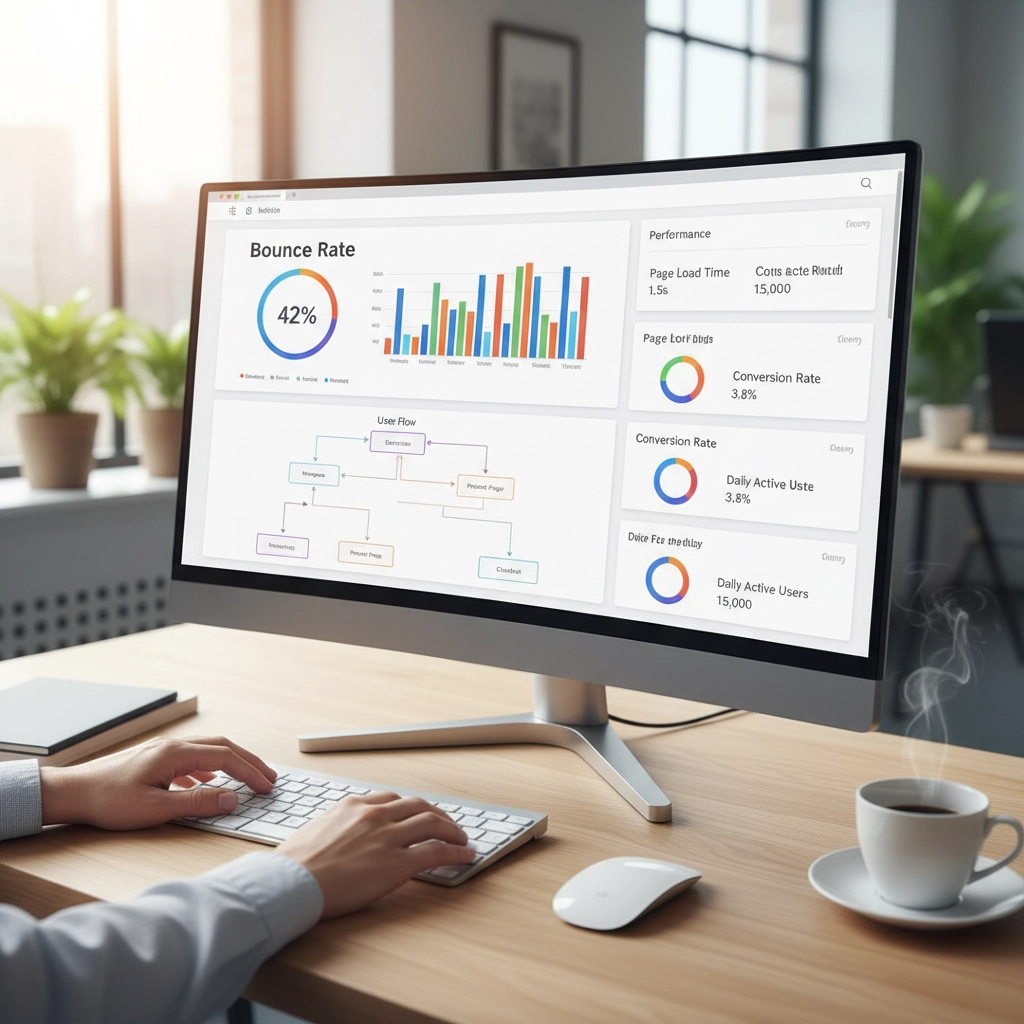The Three Second Rule in Web Design: Capture Attention or Lose Visitors
Your website has exactly three seconds. That's it. Three seconds to grab a visitor's attention before they hit the back button and never return.
The three second rule isn't some made-up marketing gimmick. It's a harsh reality backed by user behavior data. Within those first moments, visitors make snap judgments about your site. Can they find what they need? Does your business look legitimate? Is this worth their time?
If the answer isn't immediately "yes" to all three questions, they're gone.
What Happens in Those Critical Three Seconds

When someone lands on your website, their brain goes into rapid-fire evaluation mode. They're scanning for three key pieces of information:
What you do. Your primary service or product should be crystal clear from the homepage. No guessing games.
Who it's for. Visitors need to instantly recognize if your site is relevant to them. A plumber's website should look different from a yoga studio's.
What to do next. There should be an obvious next step – call now, get a quote, browse services, whatever makes sense for your business.
Miss any of these three elements and you've lost them. It's that simple.
Why Three Seconds Matters More Than Ever
Attention spans are shrinking. People have options. LOTS of options. Your competitor's website is literally one click away.
Here's the brutal truth: 53% of mobile users abandon sites that take longer than three seconds to load. But it's not just about load speed anymore. Even if your site loads instantly, visitors will bounce if they can't immediately understand your value.
Think about your own browsing habits. When you land on a confusing website, how long do you stick around trying to figure it out? Probably not long.
The stakes are higher for local businesses. When someone searches for "website design Middletown" or "responsive web design near me," they're often comparing multiple options quickly. First impressions aren't just important – they're everything.
The Elements That Make or Break Those First Moments

Clear, compelling headlines sit at the top of the priority list. Your main headline should communicate your primary benefit in plain English. Skip the clever wordplay. Be direct.
Visual hierarchy guides the eye where you want it to go. Important elements should be larger, bolder, or positioned prominently. Visitors should know where to look first, second, and third.
Professional imagery builds instant credibility. Stock photos of people pointing at computers don't cut it anymore. Real photos of your team, your work, or your location work better.
Fast load times remain non-negotiable. All the great design in the world won't help if visitors stare at a loading screen for five seconds.
Mobile optimization isn't optional. More people browse on phones than desktops now. If your site looks broken on mobile, you've lost half your audience before they even see your content.
Common Mistakes That Kill First Impressions
Auto-playing videos or music make visitors reach for the back button immediately. Nobody wants surprise noise.
Popup ads or newsletter signups that appear instantly are equally annoying. Let people see your content first.
Cluttered layouts overwhelm visitors. Too many options, colors, or elements create decision paralysis.
Vague messaging confuses people. "We provide solutions" means nothing. "We build custom WordPress websites for small businesses" is specific and clear.
Slow-loading images frustrate mobile users especially. Compress your images. Use modern formats like WebP when possible.
Practical Steps to Nail the Three Second Rule

Start with speed optimization. Run your site through Google PageSpeed Insights. Fix the biggest issues first – usually image compression and hosting performance.
Simplify your homepage layout. One clear message, one primary call-to-action, minimal distractions. Everything else is secondary.
Test your site on actual mobile devices. Don't just resize your browser window. Pull out your phone and navigate your site like a real visitor would.
Use real photos when possible. Pictures of your actual office, team, or completed projects build more trust than generic stock images.
Write headlines that pass the "grandma test" – if your grandmother couldn't understand what you do from your headline, it's too vague.
Create a visual path for visitors' eyes. Use size, color, and positioning to guide them from your headline to your main call-to-action.
How Get Your Web On Helps Businesses Win Those First Three Seconds
We've seen too many businesses lose potential customers because their websites fail the three second test. That's why our website design process focuses on immediate clarity and impact.
Our responsive design approach ensures your site looks professional and loads quickly on every device. We optimize images, streamline code, and choose hosting that performs.
We also handle the messaging piece that many designers overlook. Working with local businesses means understanding what your customers actually care about. Not industry jargon, but real benefits they can understand immediately.
Testing and Improving Your Three Second Performance

Set up Google Analytics to track bounce rates. High bounce rates often indicate three second rule failures.
Ask friends or family to visit your site and describe what you do within ten seconds. If they struggle, your messaging needs work.
Use heat mapping tools to see where visitors look first on your homepage. Are they finding your main message and call-to-action?
Check your mobile site loading speed regularly. Connection speeds vary, and what works on your office WiFi might crawl on cellular data.
Monitor your contact form submissions and phone calls. If traffic stays steady but inquiries drop, people might be visiting but not converting.
The Long-Term Impact of Getting It Right
Businesses that nail the three second rule see lower bounce rates, higher engagement, and more conversions. Visitors stick around longer, explore more pages, and take action more often.
Search engines notice these positive user signals too. Google rewards sites that engage visitors with better rankings over time.
The investment in getting those first three seconds right pays dividends for months and years. Every visitor who stays and explores represents a potential customer who might have left otherwise.
Moving Forward with Your Website
The three second rule isn't going anywhere. If anything, it's getting more important as attention spans shrink and competition increases.
Your website needs to work harder in those first moments than ever before. Clear messaging, fast performance, and intuitive design aren't luxuries anymore – they're necessities.
At Get Your Web On, we help Middletown area businesses create websites that capture attention immediately and convert visitors into customers. Because in today's digital world, you don't get a second chance to make a first impression.
Related Hashtags: #WebDesignTips #ThreeSecondRule #MiddletownWebsiteDesign #UserExperience #WebsiteOptimization #ResponsiveDesign #LocalWebDesign #WebsitePerformance #DigitalMarketing #SmallBusinessWebsite